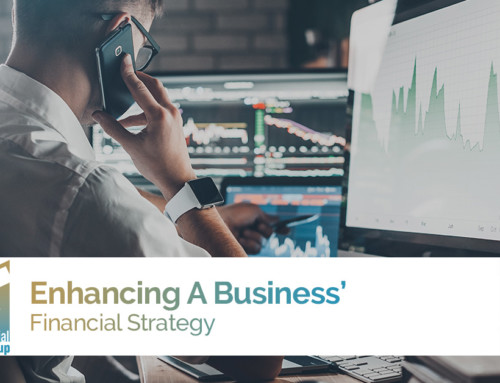Creating a Fantastic Business Plan
Meeting with your financial lender is a big deal. Why? Well, for one your financial lender is the person you will rely on to give you the loan you need for your business. Although it is difficult to imagine how one person can determine whether you get a loan or not, it is not something to be afraid of. When it comes to asset-based financing, it is essential to hit it off with your lender. Better still, to show them that your business is worth the firm’s investment.
Meeting With a Lender
When you are ready to meet with a lender, it is good to present yourself well. Now, you don’t need a complete makeover, but cleaning yourself up a bit is a must. Lenders want to be able to see that you are responsible, which typically means that you handle yourself well in an interview-like setting.
So, the best way to make a good impression is to shower before your interview. Smelling poorly will detract anyone — let alone a prospective lender. You will also want to wear clothing that does not have profanity or nudity graphically displayed. Your lender will have to have a serious conversation with you, and wearing inappropriate items of clothing will be the first way to lose their respect. For women, it is best to dress respectfully and conservatively. That means, women should wear something business casual that will cover up major areas, such as the belly.
Before the Interview
Before meeting with the lender, you should coordinate where their office is, what time you need to be there, and all the necessary paperwork. Lenders will want to see your personal financial records, such as your tax returns, bank statements, and financial statements. And, if you’re late and without the necessary documents, that doesn’t look very good for you and your business. It is best to be fully prepared and read (as you are now) on the steps you need to take for a successful meeting.
So, in recap, to have a successful meeting with your lender you need to have completed the following three things:
1. Have the right paperwork.
2. Be 15 minutes early to your appointment.
3. Finish a successful business pitch (business plan).
If you are curious about a successful business pitch, this blog is here to help you, step-by-step through the process. For most of the pitch, you will need the details of your business in a clearly written format. In the written portion it is important to make clear and concise arguments for why your lender should offer your business the money. It is important in the written portion, also called the Executive Summary, that you include all the important information related to your business.
Executive Summary
An executive summary should be short, concise, and chalk-full of raw and interesting data. Think of your executive summary as a gateway for your business plan to get a loan. Most times, your summary is the first thing a lender will see or read, which is why it is important to make a good first impression. Grammar, statistical information, and your personal feeling about you business, are all important in order to make your lender (or anyone) interested in your business. When it comes to executive summaries you never want to write a small novel, keep it concise, but useful. Also, though raw numbers, facts, and data are useful to get a lender on board, you may want to save that sort of information later in the business plan. Most people will zone out if they are bombarded with analytical content, which is why you want to make sure you open with the history of your business, partnerships, customers, patents, and even any marketing tactics you have used in the past. These facts should all be introduced in your first paragraphs, as it is the information most lenders are concerned with.
No lender will give money to a business that has no client base and no revenue coming in. That doesn’t mean they expect you to have a wide client-base. However, some lenders are concerned with the potential success your business may have. After you have touched on the above information, some lenders would like their clients to approach their “plan of attack.” Typically, this can be broken into four segments in your executive summary:
- Company Description
- The Problem You Are Facing
- The Solution
- Why Do You Need This Loan Now?
Company Description
A company description does not have you be a long summary of the history of your business. In fact, it is a small snippet of your small business and contains your name, business location, and some key components, such as history, employees, nature of the business venture, and facts about the product you are selling.
Problems You Are Facing
When you discuss the issues you are facing with your business, this isn’t an invitation to complain about the inner workings of your business. This section of the summary is purely to let the lender know what production issues you are running into. For example, if you are making rice crispy treats, but so many people want your treats, that you no longer can keep up with the demand or pay for the ingredients — that is a reasonable issue to bring up to the lender. Why? Because, in stating that your demand is too high, this clues a lender into the potential success of your business.
The Solution
The solution any of your problems will result back to money. With proper investment, your issues of demand, affording ingredients, and even hiring employees to help with the workload, will be solved. However, none of these issues can be fixed with insufficient funds. Your small business loan is the solution, but simply stating that facts aren’t enough for a lender. You will most likely need to break down how you will use the money. Specifically, you may want to submit a statistical number of revenue increase if a loan was applied to your business. So, if you were given a $35,000 loan, you would need to specify what the money would be used for, and when used, how much revenue you suspect to bring in. Make sure that your numbers are probable, and not self-assumption.
Why Do You Need This Loan Now?
Any lender will ask you, “Why now?” Which, in truth, if you are reaching the levels of success that you are now wanting to open a small business, isn’t such a strange question. If you have been successful in the past, what prompted you to get a loan now? Only you can answer this for yourself. But, keep in mind, however you answer, the lender will be listening to this reason more intently than any other.
Continuing Your Business Plan…
After you have navigated your successful business “plan of attack”, you will have to continue with your business plan. In the rest of the summary, you need to address your management structure and your financial analysis. Both of these are the most technical portion of the report, and one that the lender will respond too. After all, a lender isn’t going to loan large sums of money based on feeling and hypothetical revenue, they want to see numbers and your specific plans.
The Commercial Financial Group
At The Commercial Financial Group, we have loan representatives that are happy to hear your business plan. Our business thrives when you do, so give us a call! With a meeting with one of our asset-based loan lenders, you will be either able to receive business loans or learn what you need to do to become approved. Contact us today!








